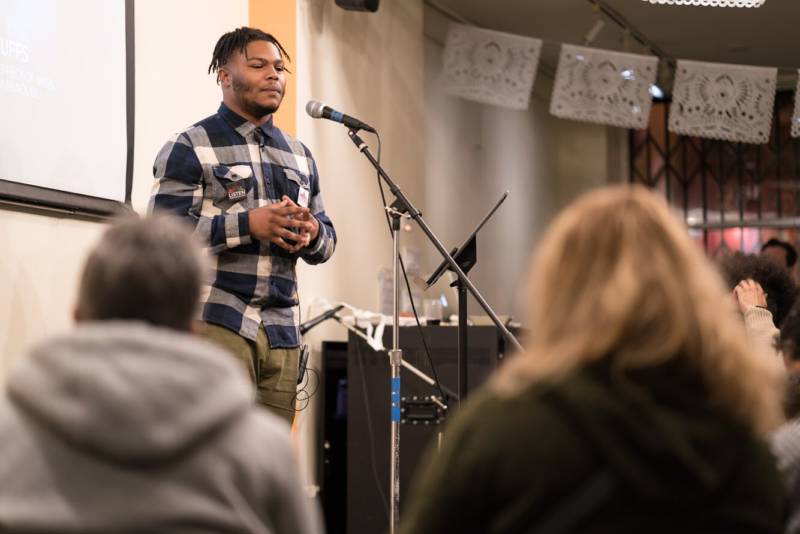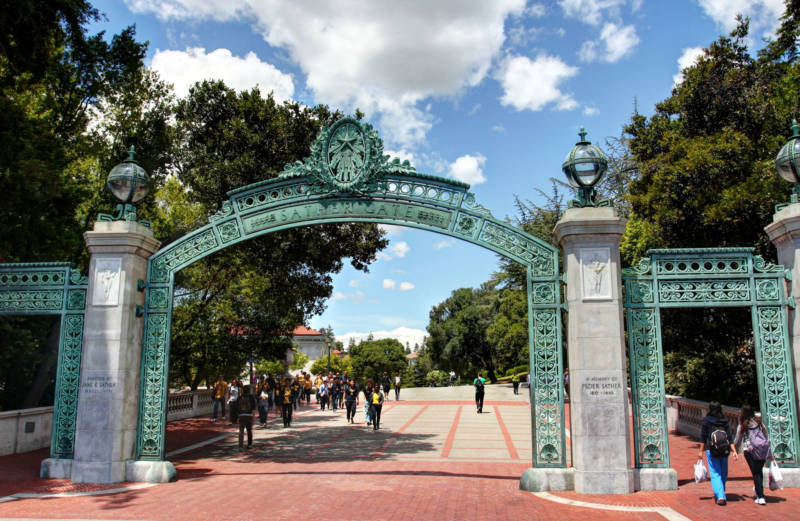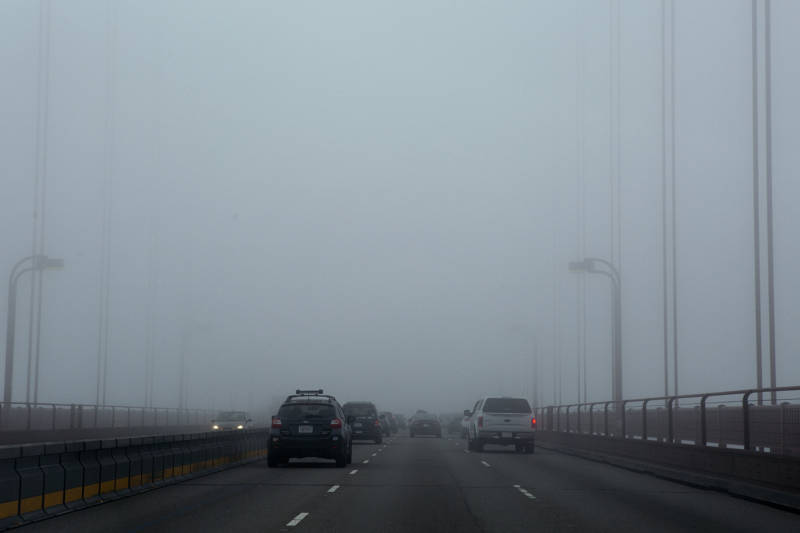Go offline with the Player FM app!
Separation is Separation, Whether at the Border or in Prison
Manage episode 213886048 series 1393026
Stay caught up with the best of KQED’s reporting each week by subscribing to the Q’ed Up podcast.
1. Family separation via incarceration

Arvaughn Williams sees similarities between his dad and the parents separated from their children at the U.S.-Mexico border: parents going to any extreme to make a better life for their kids, but then winding up apart from them.
Williams and his dad were often apart when he was growing up because his dad was incarcerated off and on throughout his childhood.
“Circumstances may be different but the story is the same,” Williams says, comparing his separation to those happening now at the border. “The outcome is no different until someone decides to say enough is enough.”
2. Nia Wilson and the war on black women

Last Sunday, Nia Wilson and her sister Lahtifa were waiting at Oakland’s MacArthur BART station for their train. They were in a well-lit area, at a reasonable hour and both were stabbed. Nia didn’t survive, but her sister did.
In this raw commentary by KQED Arts’ Pendarvis Harshaw, he goes beyond the headline and delves into what he calls the war on black women in the United States in 2018.
The Wilson sisters were just two of the many casualties in the war on black women. Many other women read their story and now walk down the street in a deeper fear than before. And yet they continue to walk down the street, to catch the train, to pursue happiness, in spite of the world we live in.
3. Affording college is a housing story, too

Every time I think about how much my rent costs in the Bay Area, I think back to my senior year in college in Columbia, Mo., where I paid $333 a month for an entire basement room with a private bathroom in a three-story, three-bedroom apartment just off of downtown.
That kind of bargain isn’t an option for most kids going to school in California, and it turns out the housing estimates many schools give out to new students aren’t that accurate.
Many schools rely on a single statewide average of non-tuition costs that doesn’t include variations for housing costs in different cities. These bad estimates can throw off not only students’ budgeting, but also their financial aid packages.
4. Fires don’t usually burn downhill. But they are now

As wildfires continue to rage across the state, and this wildfire season shows no sign of going quietly into the night, I’m starting to learn more and more about wildfires in general.
For instance, did you know that one of the first things that wildland firefighters learn is that fires burn much faster uphill? Rising heat, shorter distances and uphill winds all combine to make uphill fires bad news.
But in recent years, downhill fires have been burning fast as well. For now, the trend is anecdotal, and it hasn’t been measured by researchers, but it’s still concerning.
“It makes us really have to reevaluate our strategy,” said Cal Fire division chief Chris Anthony.
5. Why is San Francisco so windy and foggy?

I used to walk to and from work when I first moved to San Francisco in the summer of 2016. My morning walk would be warm and pleasant, but in the afternoon, the wind would be brutal.
This week, Bay Curious dove deep on the science of not only our windy summer afternoons, but also our city’s famous fog. And because they know science can be hard sometimes, they made a cartoon explainer to make it easier to understand.
Plus, they get to the bottom of why that famous fog is named Karl.
103 episodes
Manage episode 213886048 series 1393026
Stay caught up with the best of KQED’s reporting each week by subscribing to the Q’ed Up podcast.
1. Family separation via incarceration

Arvaughn Williams sees similarities between his dad and the parents separated from their children at the U.S.-Mexico border: parents going to any extreme to make a better life for their kids, but then winding up apart from them.
Williams and his dad were often apart when he was growing up because his dad was incarcerated off and on throughout his childhood.
“Circumstances may be different but the story is the same,” Williams says, comparing his separation to those happening now at the border. “The outcome is no different until someone decides to say enough is enough.”
2. Nia Wilson and the war on black women

Last Sunday, Nia Wilson and her sister Lahtifa were waiting at Oakland’s MacArthur BART station for their train. They were in a well-lit area, at a reasonable hour and both were stabbed. Nia didn’t survive, but her sister did.
In this raw commentary by KQED Arts’ Pendarvis Harshaw, he goes beyond the headline and delves into what he calls the war on black women in the United States in 2018.
The Wilson sisters were just two of the many casualties in the war on black women. Many other women read their story and now walk down the street in a deeper fear than before. And yet they continue to walk down the street, to catch the train, to pursue happiness, in spite of the world we live in.
3. Affording college is a housing story, too

Every time I think about how much my rent costs in the Bay Area, I think back to my senior year in college in Columbia, Mo., where I paid $333 a month for an entire basement room with a private bathroom in a three-story, three-bedroom apartment just off of downtown.
That kind of bargain isn’t an option for most kids going to school in California, and it turns out the housing estimates many schools give out to new students aren’t that accurate.
Many schools rely on a single statewide average of non-tuition costs that doesn’t include variations for housing costs in different cities. These bad estimates can throw off not only students’ budgeting, but also their financial aid packages.
4. Fires don’t usually burn downhill. But they are now

As wildfires continue to rage across the state, and this wildfire season shows no sign of going quietly into the night, I’m starting to learn more and more about wildfires in general.
For instance, did you know that one of the first things that wildland firefighters learn is that fires burn much faster uphill? Rising heat, shorter distances and uphill winds all combine to make uphill fires bad news.
But in recent years, downhill fires have been burning fast as well. For now, the trend is anecdotal, and it hasn’t been measured by researchers, but it’s still concerning.
“It makes us really have to reevaluate our strategy,” said Cal Fire division chief Chris Anthony.
5. Why is San Francisco so windy and foggy?

I used to walk to and from work when I first moved to San Francisco in the summer of 2016. My morning walk would be warm and pleasant, but in the afternoon, the wind would be brutal.
This week, Bay Curious dove deep on the science of not only our windy summer afternoons, but also our city’s famous fog. And because they know science can be hard sometimes, they made a cartoon explainer to make it easier to understand.
Plus, they get to the bottom of why that famous fog is named Karl.
103 episodes
All episodes
×Welcome to Player FM!
Player FM is scanning the web for high-quality podcasts for you to enjoy right now. It's the best podcast app and works on Android, iPhone, and the web. Signup to sync subscriptions across devices.




